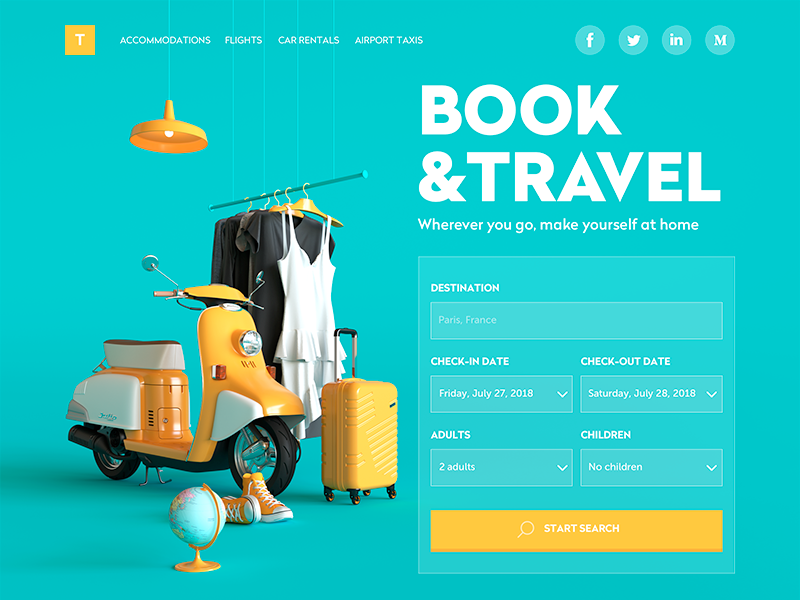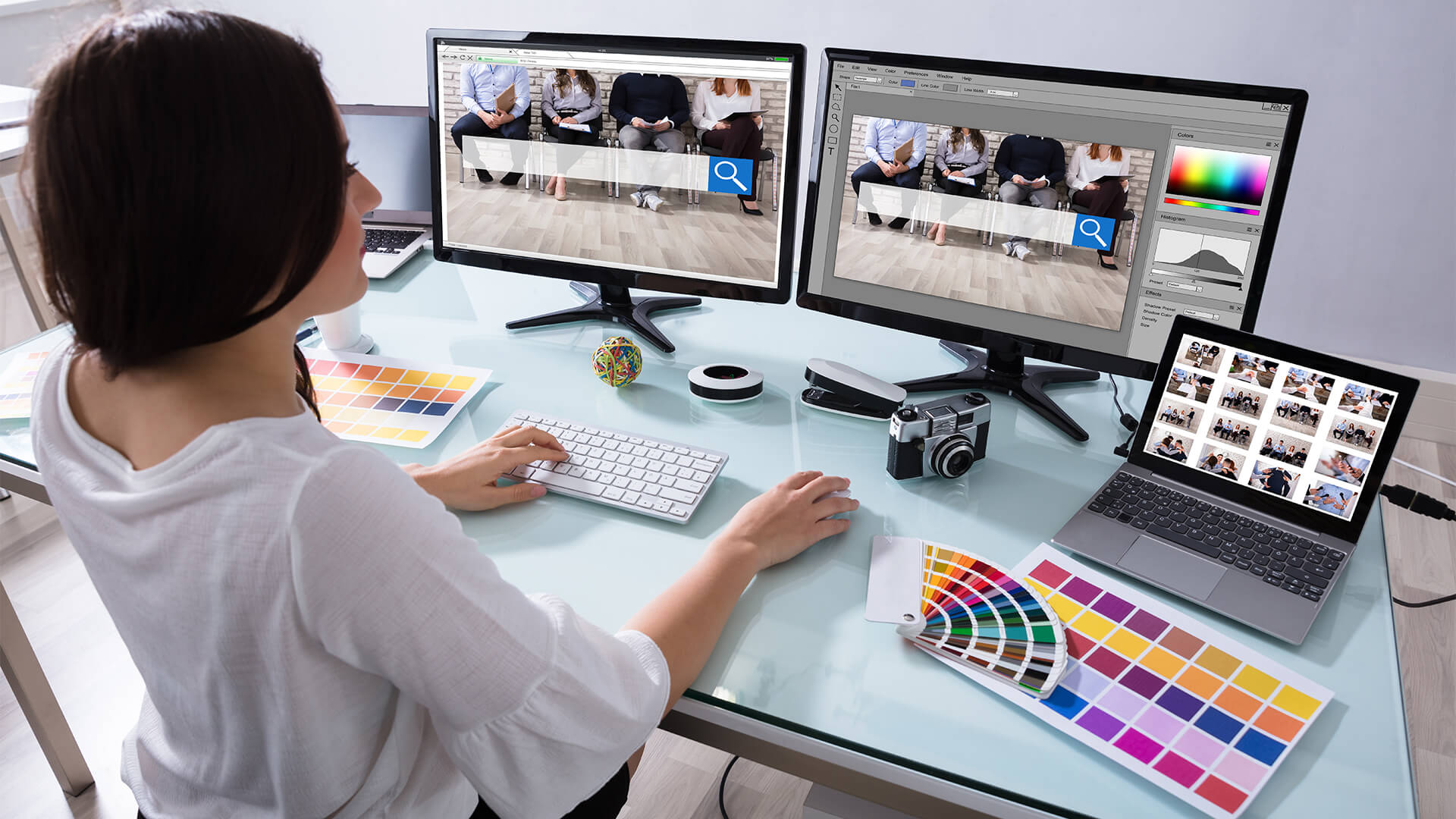The Most Effective Kinds Of Web Design to Enhance Individual Experience and Involvement
In the ever-evolving landscape of electronic communication, the efficiency of Web layout considerably impacts user experience and engagement. Various style approaches, such as minimalist, responsive, and interactive layouts, each deal special advantages that can cater to diverse individual needs.
Minimal Website Design
As electronic landscapes become significantly cluttered, minimal website design has actually emerged as an effective technique to improving customer experience. This layout viewpoint focuses on simplicity, concentrating on necessary elements while removing unneeded distractions. By using sufficient white area, simple navigation, and a minimal color palette, minimal style promotes clearness and routes individual attention to essential content.
The core principle of minimalist website design is to develop a smooth interaction for individuals. By decreasing cognitive load, individuals can promptly comprehend info without really feeling bewildered. This direct approach not only improves usability but additionally urges involvement, as visitors are most likely to discover a website that is visually appealing and easy to browse.
Furthermore, minimalist style usually emphasizes typography and images, utilizing these aspects purposefully to convey messages successfully. This emphasis on important parts can improve brand identification and develop a memorable customer experience. In essence, minimalist website design is not simply a trend; it is a thoughtful methodology that recognizes the importance of user-centered design. By removing away supplementary aspects, developers can produce a much more appealing, reliable, and enjoyable Web experience for all users.
Receptive Web Layout
In today's varied electronic atmosphere, responsive website design has actually ended up being vital for developing a smooth individual experience across a plethora of devices. As customers access sites on mobile phones, tablets, desktop computers, and laptops, the capability of a web site to adapt its design and material to different display dimensions and resolutions is critical.
Receptive Web layout uses versatile grids, pictures, and CSS media queries to ensure that Web material exists ideally, regardless of the device used. This strategy not just improves the visual appeal of a website yet additionally substantially improves usability. Customers are more probable to engage with a website that supplies a regular experience, as it gets rid of the irritation of having to focus or scroll excessively.
By embracing receptive design, organizations can enhance their visibility and get to a broader audience. In summary, responsive Web layout is an essential technique that enhances individual experience, involvement, and general contentment.
Interactive Web Style
Receptive website design prepares for boosting user experience, however interactive Web layout takes this an action even more by involving customers in a more dynamic method - Aligned Position Web Design. By integrating components such as animations, clickable models, and real-time responses, interactive Web layout captivates users, drawing them right into a richer surfing experience
This technique not just cultivates engagement but likewise motivates customers to discover material proactively as opposed to passively eating it. Techniques such as gamification, where users earn rewards for completing tasks, can considerably improve the moment invested in a website and boost total satisfaction. Furthermore, interactive features can simplify complex information, making it more satisfying and digestible.

Integrating interactive style components can also result in greater conversion prices, as users are extra likely to engage with a website that proactively involves them. Aligned Position Web Design. Eventually, interactive Web layout changes customer experiences into unforgettable trips, ensuring that visitors return time and once more
Apartment Layout
Characterized by click now its minimalistic strategy, level layout emphasizes simplicity and functionality, stripping away unnecessary aspects and concentrating on essential features. This design philosophy prioritizes usability, making certain that users can navigate user interfaces effortlessly and performance. By using a tidy aesthetic, flat layout removes the mess commonly found in more ornate designs, consequently improving user concentrate on content and capability.
The characteristic of level style hinges on its use bold shades, straightforward typography, and geometric forms. These aspects add to a visually enticing user interface that is both contemporary and approachable. Additionally, flat layout promotes a sense of quality, permitting users to determine over here vital actions and details without disturbance.
Moreover, flat layout is specifically efficient in responsive Web style, as its simplicity equates well across various tools and screen dimensions. The absence of intricate appearances and gradients minimizes filling times, which is important for maintaining customer involvement. As digital landscapes continue to progress, flat style remains a pertinent option for developing easy to use internet sites that improve total go to this site experience. By focusing on essential functions, flat layout not only satisfies user requirements yet also motivates seamless communication, making it a vital element of reliable Web style approaches.
Adaptive Web Design
Adaptive Web design customizes the individual experience by producing numerous dealt with formats tailored to various display dimensions and tools. Unlike receptive layout, which fluidly readjusts a solitary design, flexible style utilizes unique designs for certain breakpoints, ensuring ideal discussion on numerous systems. This technique permits developers to concentrate on the special qualities of each device, enhancing usability by delivering precisely what customers require based on their context.
One of the primary benefits of flexible website design is its ability to optimize load times and performance. By serving customized material and images that fit the user's tool, websites can minimize information usage and improve loading rates. This is specifically valuable for individuals with slower links or restricted data strategies.

Furthermore, adaptive layout assists in an extra controlled and constant branding experience. Given that designers produce multiple designs, they can ensure that the visual aspects straighten with the brand's identity across different systems - Aligned Position Web Design. This causes a cohesive customer experience, enhancing interaction and advertising customer retention
Conclusion
Minimal design cultivates quality and emphasis, while responsive design guarantees adaptability across various devices, advertising access. Jointly, these style approaches add to the production of user-friendly settings that not just enhance complete satisfaction but also drive greater conversion rates, highlighting their important significance in contemporary Web design strategies.

Minimal style cultivates quality and emphasis, while receptive layout makes certain flexibility across different tools, advertising access. Jointly, these layout comes close to add to the development of easy to use settings that not just boost satisfaction yet additionally drive greater conversion prices, highlighting their crucial value in contemporary Web design approaches.